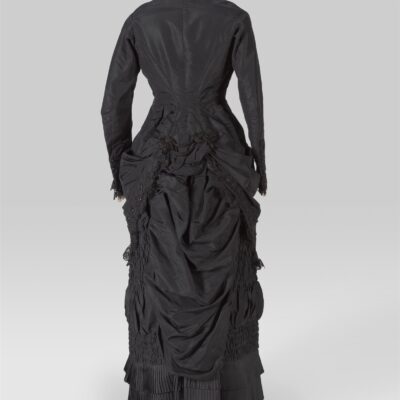
EFHA World 08.09.2023
24.07.2018
1900sartcoutureFrench fashion
Jacques Doucet is one of the most famous fashion designers who not only collected art, but also supported artists and architects in their activity, asking them to shape the spaces in which he lived and worked.
The link between the fashion world and that of the arts was quite strong at the beginning of the twentieth century, especially thanks to couturiers who also were avid art collectors central in the cultural life of Paris. Jacques Doucet is surely one of the most famous designers who not only collected art, but also supported artists and architects in their activity, asking them to shape the spaces in which he lived and worked.
Doucet was born in Paris in 1853. His family owned a very profitable lingerie and linens business, Doucet Lingerie. Raised in a refined and rich environment, from a very young age Doucet begun collecting eighteenth-century furniture, paintings and sculptures. In 1871, he opened his fashion house, and in his creations can be seen a heavy influence from the style of the objects he collected. His penchant for this opulent era made him the go-to designers for the divas of the time, as Cécile Sorel, Rejane and Sarah Bernhardt, for whom he created outfits that were both refined and recognisable, enriched with embroideries, frills, rouches and volants.
His style was too grand for the modern look in vogue in the 1920, so his popularity faded in that period. However, he kept working and in 1927 he asked cubist artists and sculptors to decorate his Studio House in rue Saint-James, Neuilly-sur-Seine. Its name was ‘hôtel particulier’: it was designed by the architect Paul Ruaud and included works and projects by Laurens, Csaky, Lipchitz and Marcoussis.
Apart from being interested in the eighteenth century, throughout his life he accumulated contemporary works of art, especially Post-Impressionist and Cubist paintings; the most know piece in his collection was surely Les Demoiselles d’Avignon, which he bought direct from Picasso’s studio. His collection of books included both art publications and manuscripts from contemporary writers: the first was donated to the University of Paris in 1917 and then transferred to the Institut National d’Histoire de l’Art in 2003; the second formed the Bibliothèque littéraire Jacques-Doucet, dedicated to the designer in 1929, year of his death.